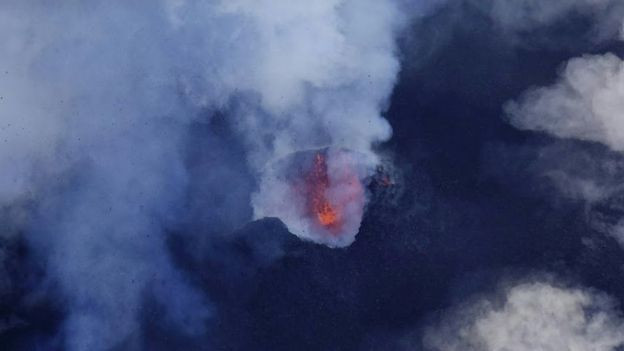Long Valley Volcano's 'Super-Eruption' Magma Was Cooler Than Past Estimates: Study

Long Valley, California, witnessed a ‘super-eruption’ about 765,000 years ago. This caused a pool of molten rock to explode into the sky causing a devastating pre-historic firework show. The eruption caused 650 cubic kilometers of lava and ash to spew out, which released enough sulfur gas to blanket our planet and cool it.
International Business Times earlier reported the ash cloud from the lava helped cool down Earth and show first traces of life. Now, a paper published in the Proceedings of the National Academy of Sciences shows the giant body of magma at Long Valley was much cooler before the eruption, than previously estimated.
According to Nathan Andersen, lead author of the paper and recent graduate from the University of Wisconsin–Madison with a Ph.D. in geoscience, “the older view is that there’s a long period with a big tank of molten rock in the crust, but that idea is falling out of favor.”
“A new view is that magma is stored for a long period in a state that is locked, cool, crystalline, and unable to produce an eruption. That dormant system would need a huge infusion of heat to erupt,” he added in a press release by University of Wisconsin-Madison.
The team pondered over the rapid rise in temperature of the rock from an estimated 400 degrees Celsius to the 700 to 850 degrees needed to erupt. They arrived at a phenomenon where a much hotter rock from deep below rose up rapidly, causing heating.
The crystals from solidified rock were incorporated into the magma shortly before the eruption, Andersen said. This means the molten conditions of the pool lasted only a few decades, at most a few centuries.
According to him, “basically, the picture has evolved from the ‘big tank’ view to the ‘mush’ view, and now we propose that there is an under-appreciation of the contribution of the truly cold, solidified rock.”
The new results were concluded after a detailed analysis of argon isotopes in crystals from Bishop Tuff in Long Valley. This high-volume rock, which was released when the Long Valley Caldera formed, provided the best study samples. The argon in the samples are produced when radioactive potassium decays fast. This causes a quick escape from hot crystals. If the magma was uniformly hot, then the argon would not accumulate. The date of formation would be the same for all the argon because a uniform temperature would cause all of them to escape simultaneously.
According to the report published using a high-precision mass spectrometer in the Geochronology Lab at UW–Madison, the research group’s dates spanned a 16,000 year range, indicating the presence of some argon that formed long before the eruption. This points to unexpectedly cool conditions before the giant eruption.
Andersen said the magma transformed from mush to a rock, which led to the discovery using the highly sensitive equipment.
“Nathan found that about half of the crystals began to crystallize a few thousand years before the eruption, indicating cooler conditions,” says Brad Singer, a professor of geoscience at UW–Madison and director of the Geochronology Lab. “To get the true eruption age, you need to see the dispersion of dates. The youngest crystals show the date of eruption.”
This eruption caused a cloud of ash to envelop our planet. The study of rock records from this period aids geologic, biologic and climatic studies across the continent, says Andersen.
“This blanket of ash anchors you in time. The closer we can pin down the eruption age, the better we can study all facets of Earth’s history.”
“It’s controversial, but finding these older crystals means that part of this large magma body was very cool immediately prior to eruption,” says Singer, a volcanologist who was Andersen’s UW advisor. “This flies in the face of a lot of thermodynamics.”
A better understanding of these rock formations could help us understand the conditions under which life originated on this planet and also help better volcano forecasting — a highly useful but difficult proposition at present.
© Copyright IBTimes 2025. All rights reserved.




















